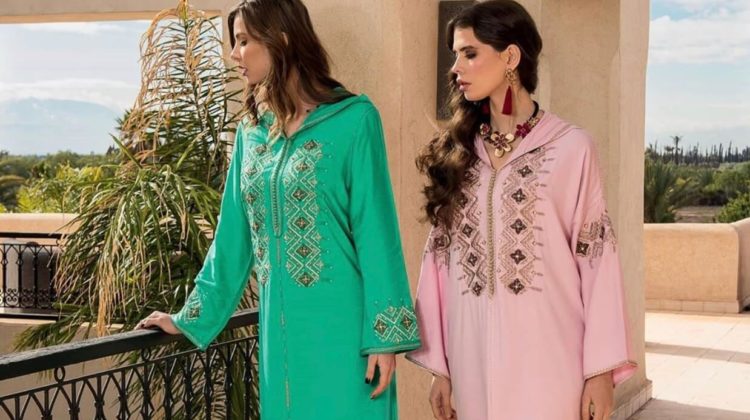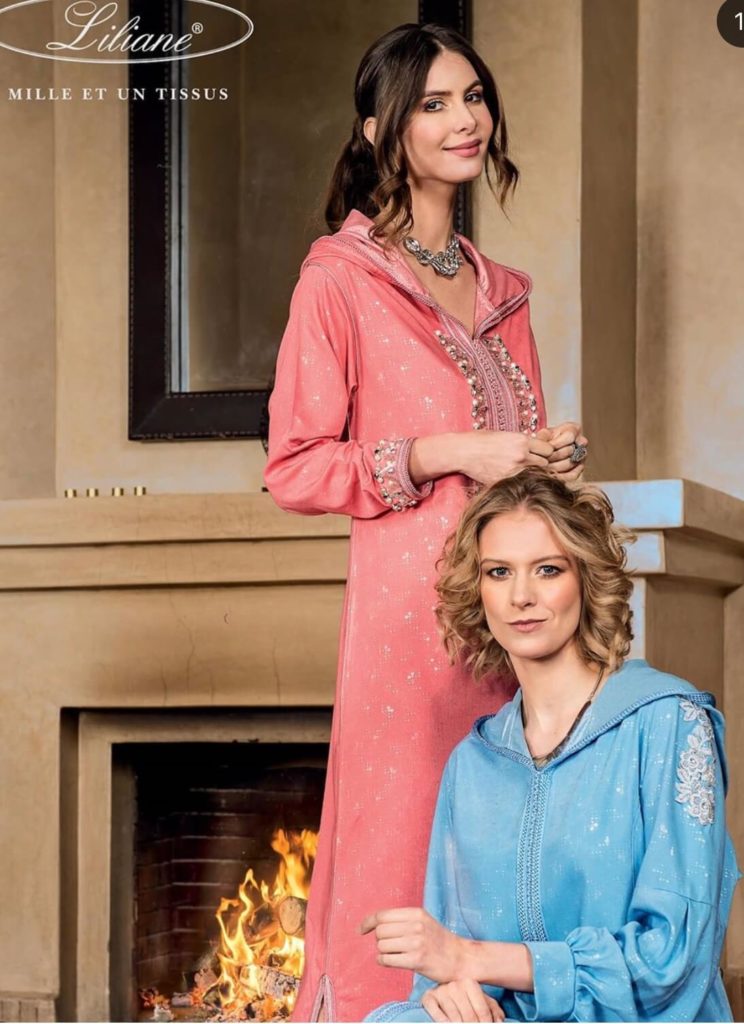
What is a Djellaba?
Many cultures have a go-to outfit or piece of clothing – something that’s comfortable, versatile, a stylish.
In Morocco, it’s the djellaba, a long garment with sleeves and a hood that comes in dozens of different styles and can be worn by men and women.
They usually reach all the way to the ground, although some may be a little shorter for ease of walking. Nearly all djellabas have a large loose hood, known as a kob, that comes to a point in the back.
In some cases, the hood is used for keeping the wearer warm or protecting their face from desert sun and wind.
With fancier styles, the hood isn’t always worn, but is still important as a traditional decorative element.
Djellabas are different from other popular Moroccan clothes such as kaftans and gandoras.
Kaftans are also long loose garments with sleeves, but they don’t have hoods and are worn by women for fancy events such as weddings and engagement parties.
They are usually intricate and sometimes consist of two pieces, a colorful lightweight slip and a heavier outer piece with embroidery, sequins, or pearls.
Many styles are accompanied by a wide decorative belt and worn with high heel shoes and bold jewelry.
Gandoras are simple and are worn by men and women. They are long with no hood and can be either short sleeved and casual or long sleeved for a slightly more formal look for men.
Djellabas fall somewhere in between – they range from simple designs with lightweight fabric for daily use, to heavy material for cold weather, to fine fabrics with intricate decorations for special events, though not as elaborate as a kaftan.
This versatility makes them one of the most essential items in the Moroccan wardrobe.
Origin and Types of Djellaba
Djellabas originated in the Amazigh (Berber) cultures of North Africa and reflect both locally available materials and the regional climate.
Morocco has a dramatic range of climates, from chilly mountain towns that receive snow to scorching deserts.
Many areas in the north of the country experience both hot summers and chilly, wet winters.
The most traditional styles are a plain cotton djellaba for summer use and a coarsely woven wool version, often with black, brown, blue, or cream stripes, for winter use, made with wool from local sheep.
In some Berber communities, the color of the djellaba indicates the wearer’s marital status.
These days, most Moroccans have access to a wide range of modern and imported style options, but djellabas remain wildly popular and the options have proliferated.
You can find them in almost any material – cotton, wool, silk, synthetics, and more.
Lightweight colorful djellabas with modern stylish designs are ubiquitous as a daily outfit for Moroccan women.
Modesty is important in Moroccan faith and culture, but women also make a point to be neatly and attractively dressed.
Djellabas are the perfect solution, since they are long and loose and come in dozens of gorgeous colors and patterns with cute embellishments.
A djellaba can be slipped over shorts and a tank top in the summer, or leggings and a long-sleeved shirt in the winter, so you can be ready in moments for a quick trip to the store, a visit from neighbors, or a stroll along the beach.
The more formal the occasion, the more decoration you will see on women’s djellabas, including embroidery and embellishments on the front, detailing around the collar, and a beaded tassel on the tip of the hood.
There are even djellabas specifically for casual home wear made of polar fleece! They are especially popular with women as pajamas or loungewear during the winter months.
Men also favor djellabas for the ease and comfort. Wool djellabas are still quite popular during the winter.
In the summer, men might don a cotton djellaba over shorts before visiting the mosque for prayers, or for occasions when a formal outfit is required.
In fact, djellabas are one of the most traditional festive outfits for men in Morocco.
On special occasions, many men wear a light-weight cream colored djellaba, a red fez hat, and yellow leather slippers, known as balgha.
You will often see the King of Morocco and other court members dressed this way for religious holidays such as Eid al Kabir.
They can also be used for weddings, funerals, and other important events.
Men’s djellabas are not usually as colorful as women’s – typically black, brown, gray, or yellow, and decoration is limited to a little bit of embroidery around the collar.
In recent years, the comfort and stylishness of the djellaba has made it popular outside of Morocco.
You can find high fashion djellabas at red carpet events in Morocco and around the world, as well as online sewing patterns for comfy kid’s djellabas!
Now that you’ve seen how comfortable and versatile they are, you’re probably wondering where you can get your own.
Where can I buy a Djellaba?

If you will be in Morocco any time soon, you will have a huge selection to choose from.
Avoid the super touristy streets which will have high prices and limited selection, and ask your hotel manager or tour guide where to find neighborhood malls full of small shops (kissariat) that sell dozens of styles. But you don’t have to go to Morocco to find a great djellaba!
Several shops specialize in djellabas, including Maison Lilane , British Bedouin , and Choukrane Marrakech.
There are endless style options, so check them out and you are sure to find a djellaba you love! Then, check out Azari Vintage for perfect shoes and jewelry to match
Some links below may be affiliate links. As an Amazon Associate I earn from qualifying purchases.
Looking to Own Your Own Kaftan or Takchita?

